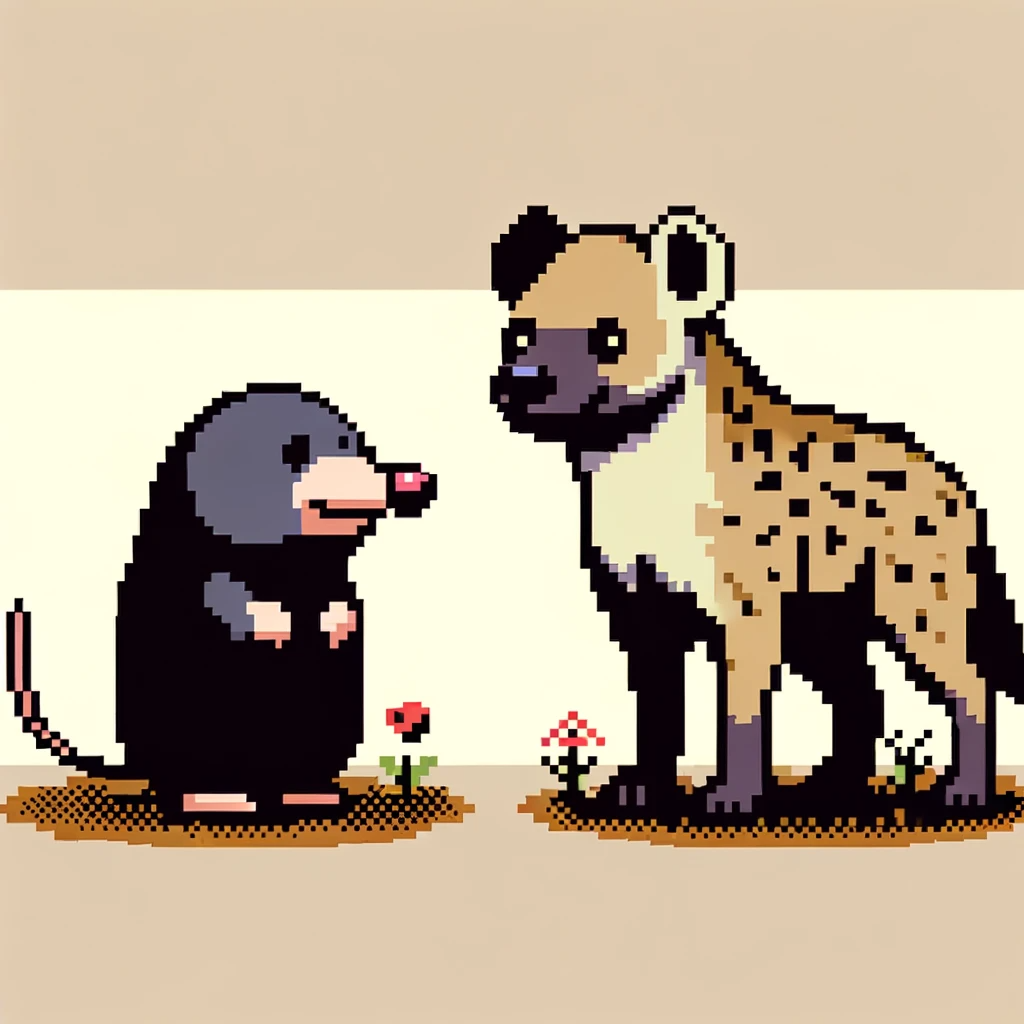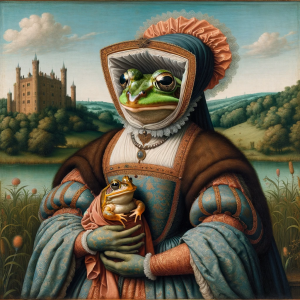
The Fascinating World of Female Moles and Hyenas: A Journey into their Unique Biology and Evolution
Have I got some girl bosses for you?!? (I’m a 43 year old man; I have no business trafficking in youth slang…)
Welcome to a fascinating journey into the world of two unique creatures – the Talpid moles and the spotted hyenas. Our guide is the comprehensive study, “The Biology and Evolution of Fierce Females (Moles and Hyenas),” published in the Annual Reviews. This article sheds light on the peculiarities of these animals’ reproductive systems and what it tells us about nature’s complexity.
Understanding the Basics
Firstly, let’s clarify what makes these females so unusual. In many mole species, females develop what’s known as ovotestes, organs that function like ovaries but also produce testosterone, a hormone typically associated with males. Their external genitalia resemble those of males, and they exhibit behaviors often attributed to male territoriality. Similarly, female spotted hyenas are notable for their absence of an external vaginal orifice and the development of a pseudopenis, through which they urinate, mate, and give birth.
Why Does This Matter?
The study of these animals extends beyond mere curiosity. It challenges our traditional understanding of sex and gender roles in the animal kingdom. By examining the peculiarities of these species, scientists gain insights into the flexibility and diversity of nature’s reproductive strategies. This has broader implications for understanding evolutionary processes and even has potential applications in understanding human biology.
The Role of Hormones and Environment
The article delves into how hormonal, genetic, and environmental factors play a role in the development of these unique traits. For instance, the production of testosterone in female moles is linked to their aggressive and territorial behaviors, traits typically associated with males. Understanding these complex interactions helps scientists piece together the evolutionary puzzle of why and how these traits developed.
Implications for Everyday Understanding of Nature
For the everyday person, this research serves as a reminder of the incredible diversity of life and the complexity behind seemingly straightforward concepts like male and female. It showcases how nature often defies simple categorization and encourages a deeper appreciation for the intricacies of the natural world.
Key Takeaways from the Study
- Biological Diversity and Adaptation: The study highlights nature’s vast array of living strategies and adaptations. Female moles and hyenas are examples of how animals can diverge significantly from common reproductive and behavioral norms.
- Challenging Gender Norms: The existence of these animals challenges our preconceived notions of gender and sex, showing that nature often operates outside human-defined categories.
- Importance of Research: Continued research into these species provides valuable insights into the workings of evolution and biology, contributing to our overall knowledge and potentially informing conservation efforts.
Conclusion
As we explore the biology and evolution of fierce females in the animal kingdom, we’re reminded of the sheer wonder of nature. The peculiarities of female moles and hyenas offer a window into the vast, often unexpected, range of reproductive and social strategies in the wild. These animals challenge our perceptions, showing that in nature, there’s always more than meets the eye.
Embark on a Scientific Adventure:
Join ‘This Week in Science’ and explore the universe of knowledge! Our weekly newsletter is crafted for educators and enthusiasts, bringing you the latest and most exciting scientific discoveries. Every issue is packed with cutting-edge research, breakthroughs, and captivating stories from the world of science. Subscribe now for free and transform your teaching and learning experiences. Embark on your path to becoming more knowledgeable and connected with the ever-evolving world of science.



